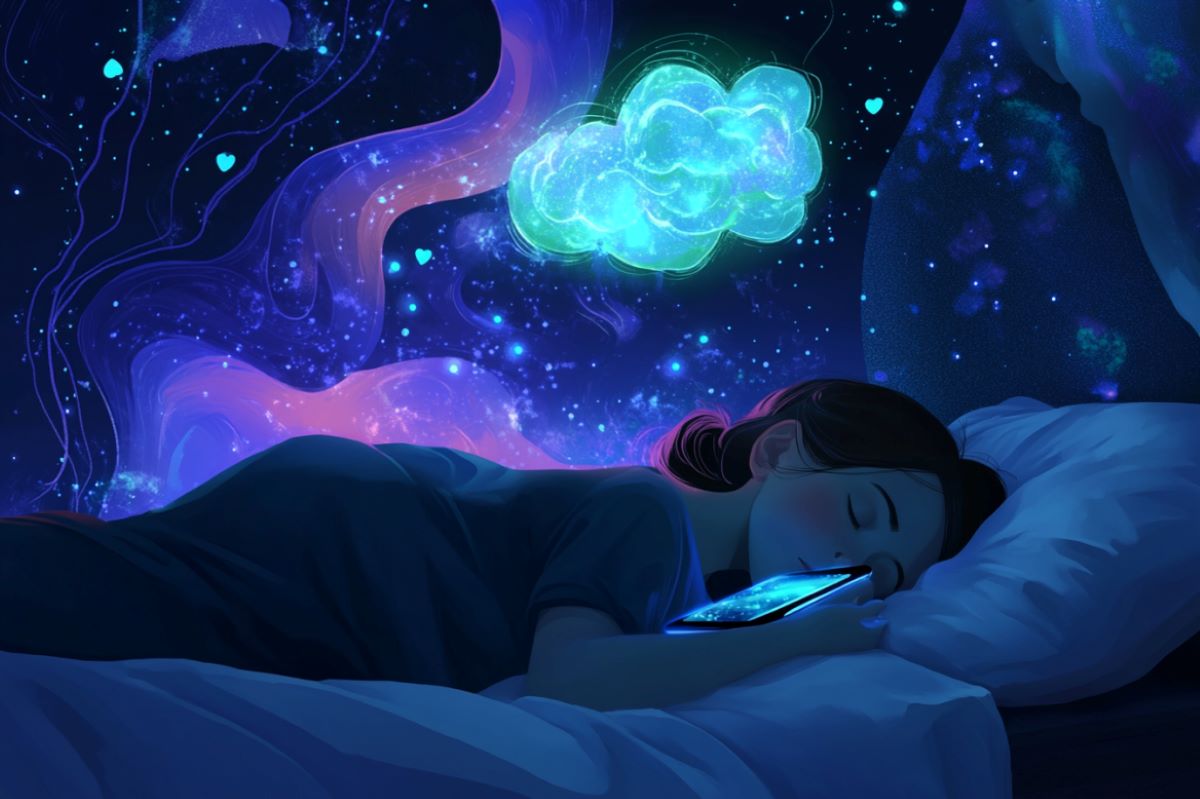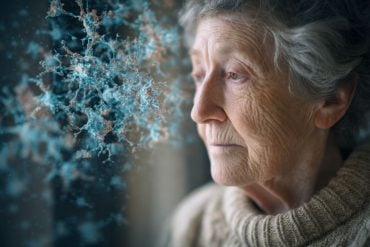Summary: A new study shows that a lucid dreaming app, using the method called Targeted Lucidity Reactivation (TLR), can increase lucid dreaming frequency from 0.74 to 2.11 dreams per week. This research demonstrated that sensory cues delivered during sleep significantly enhanced dream awareness, with participants reporting improved emotional states after lucid dreams. The app combines pre-sleep training with auditory cues, showing promise for sleep-based self-improvement.
Key Facts:
- Lucid dream frequency tripled using the app’s sound-based cues.
- Sensory cues help boost awareness during dreams, fostering dream control.
- Lucid dreams are linked to mood improvements and lower stress the following day.
Source: Northwestern University
Lucid dreaming apps are gaining in popularity as interest grows in optimizing sleep for self-improvement and better health. If you ever experience a dream while knowing that you are dreaming — that’s what’s called a lucid dream.
To date, the effectiveness of an at-home method for lucid dreaming that combine pre-sleep training with sensory cues has not been systematically tested.
A new study by neuroscientists at Northwestern University is the first to provide evidence that this method, known as targeted lucidity reactivation (TLR), can be successful with minimal technical requirements.
Adapting the TLR method previously used in Ken Paller’s sleep lab at Northwestern, the team conducted research using a smartphone app that links sensory stimulation with a lucid state of mind.
This research offers new evidence that the TLR method at its most basic level works. Study participants improved while using the app to an average of 2.11 lucid dreams per week, up from an average of 0.74 lucid dreams over the prior week.
“This is a dramatic increase, because even one lucid dream a week is considered quite a lot for most lucid dreamers,” said Karen Konkoly, a post-doctoral psychology fellow at Northwestern.
“The goal of this line of research was to find out how many lucid dreams we could evoke with just a smartphone, and to set a baseline of ease and access for people,” Konkoly said.
The study is also the first to include a control group to test the effectiveness of the two-part approach of TLR. The first part is pre-sleep training provided via the app. The second part is reactivating lucidity with a sound cue during sleep.
Unbeknownst to members of the control group, they were given either no sound or a different sound cue during sleep rather than the one used in training.
The study’s senior author is Paller, James Padilla Chair in Arts and Sciences in the department of psychology at Northwestern, who earlier this month was awarded the National Institutes of Health (NIH) Director’s Pioneer Award, part of NIH’s High-Risk, High-Reward Research program.
Additional co-authors on the study include Nathan Whitmore, Remington Mallett and Christopher Mazurek, who also worked in the department of psychology at Northwestern.
How the study was done
The 19 participants who completed the first experiment each met the criteria of owning an Android phone, sleeping at least 7-8 hours per night and expecting they could fall back to sleep if woken up in the final two hours of the night.
Before sleep, participants first tested the app volume to ensure sensory cues were audible when their phone was placed face down near their pillow, but not so loud the cues would wake them up.
The app provided participants with nightly training before sleep that included a sound cue and directions to become lucid by becoming aware of their physical, mental and emotional state, and details of their surroundings.
If the participant awoke from sleep, they responded to a prompt on their phone asking whether the sound cue woke them. They also completed a nightly dream log.
To determine whether lucid dreaming resulted from TLR rather than merely expectations or sleep disruption, a second experiment was conducted with a group of 120 app users. In this experiment, all participants received the nightly training, but on alternate nights control participants received a dummy sound cue or no sound cue during sleep.
On the first night of the experiment, when everyone received the real cue, 17% of participants had lucid dreams. On the second night, those who received the real cue again maintained this rate of lucid dreaming, whereas only 5% of control participants had lucid dreams.
Additional evidence of lucidity was provided in participants’ dream logs. One participant who received the cue and remained asleep, described a dream in which they were at the office and noticed others reacting to a sound and trying to figure out what it was. Another described being in the locker room at their lifeguard job and growing increasingly frustrated as they sought the source of a sound, until they realized it was the cue.
Implications
“Tweaking sleep opens the door for people to change their dreaming,” Paller said. “We are taking a sleep-engineering approach to using sleep for personal benefits, for practicing skills, solving problems, and for spiritual and personal growth.”
Indeed, early evidence shows lucid dreaming can positively influence a person’s mood the following day.
“Some studies have shown the day after people have a lucid dream, they frequently report feeling happier and less stressed,” Konkoly said.
Next Steps
According to Paller, the risk of waking up users was a drawback of using the app method. Another downside was the inability to deliver cues when people entered rapid eye movement (REM) sleep, the phase when lucid dreaming is most probable.
The researchers say the next phase of research will experiment with wearable technology that can prevent undue awakening and can determine when users are likely in REM sleep, which may increase the success rate.
Paller’s lab has begun collaborating with InteraXon, the creators of the Muse-S headband, a wearable device that gathers sleep lab-quality data at home.
“We are interested in sleep-engineering methods that work in tandem with our automated sleep-stage detection,” said InteraXon Founder Ariel Garten.
“These efforts will enable citizen science – delivering novel scientific insights from large numbers of people using these devices in their own homes.”
About this auditory neuroscience and lucid dreaming research news
Author: Stephanie Kulke
Source: Northwestern University
Contact: Stephanie Kulke – Northwestern University
Image: The image is credited to Neuroscience News
Original Research: Open access.
“Provoking lucid dreams at home with sensory cues paired with pre-sleep cognitive training” by Ken Paller et al. Consciousness and Cognition
Abstract
Provoking lucid dreams at home with sensory cues paired with pre-sleep cognitive training
The ability to realize that you’re dreaming — lucid dreaming — has value for personal goals and for consciousness research. One route to lucid dreaming is to first undergo pre-sleep training with sensory cues and then receive those cues during REM sleep.
This method, Targeted Lucidity Reactivation (TLR), does not demand extensive personal effort but generally requires concurrent polysomnography to guide cue delivery.
Here we translated TLR from a laboratory procedure to a smartphone-based procedure without polysomnography.
In a first experiment, participants reported increased lucid dreaming with TLR compared to during the prior week. In a second experiment, we showed increased lucidity with TLR compared to blinded control procedures on alternate nights.
Cues during sleep were effective when they were the same sounds from pre-sleep training. Increased lucid dreaming can be ascribed to a strong link formed during training between the sounds and a mindset of carefully analyzing one’s current experience.







